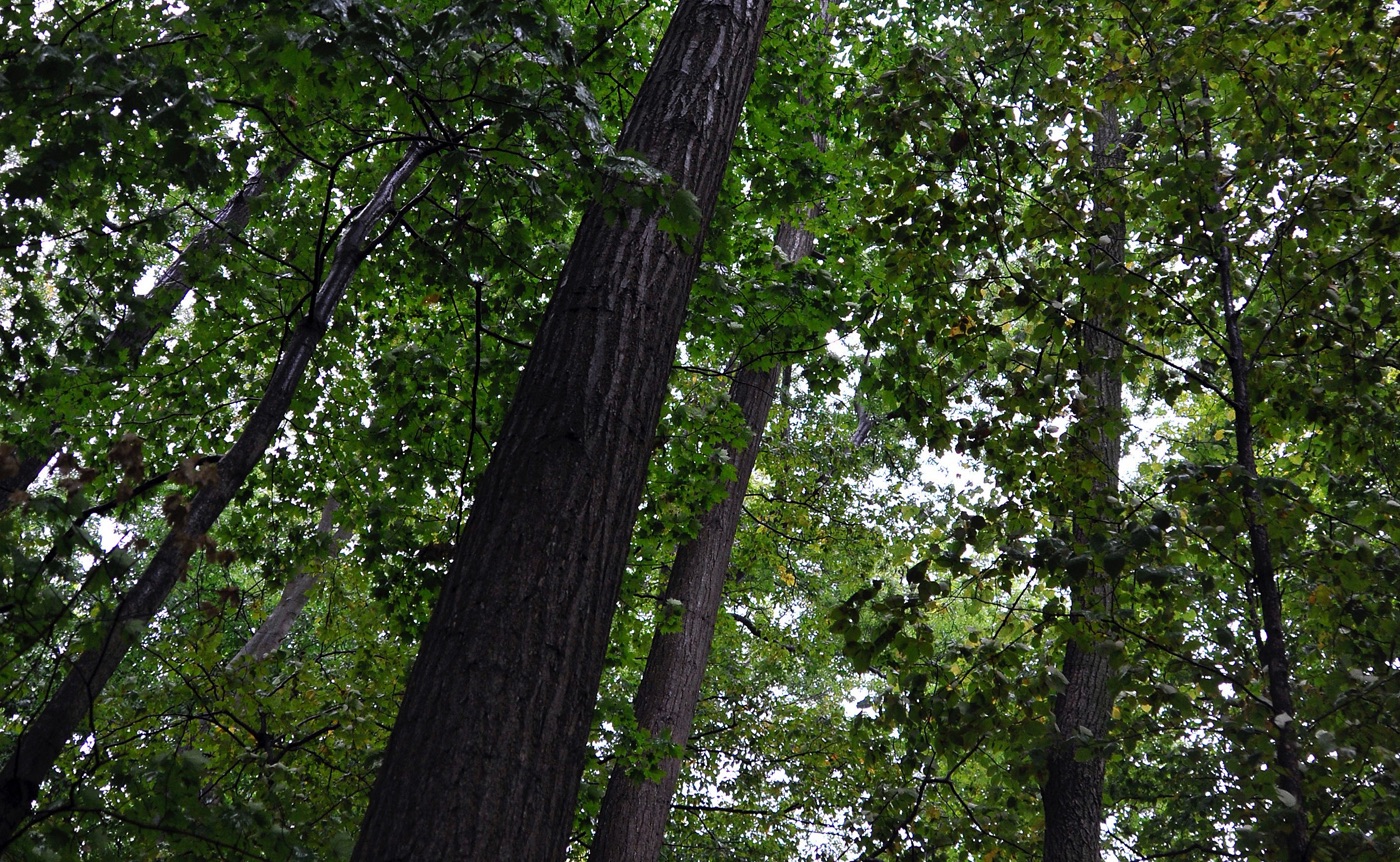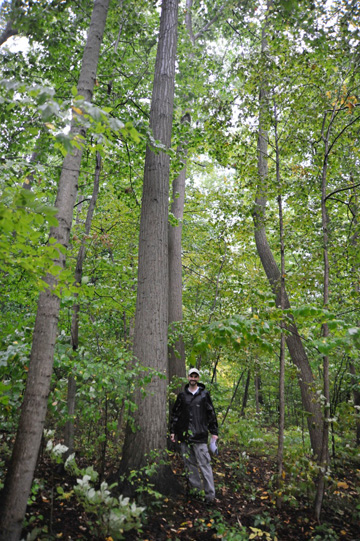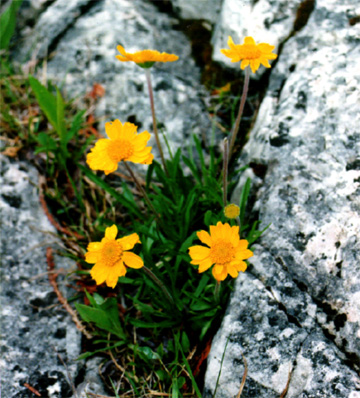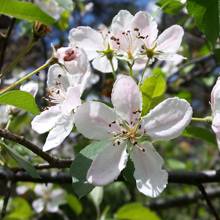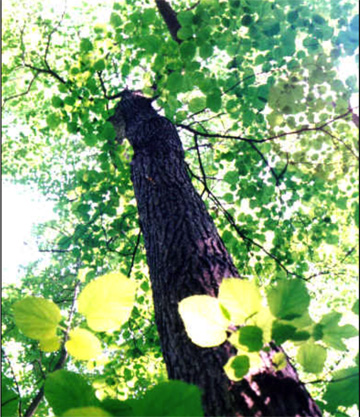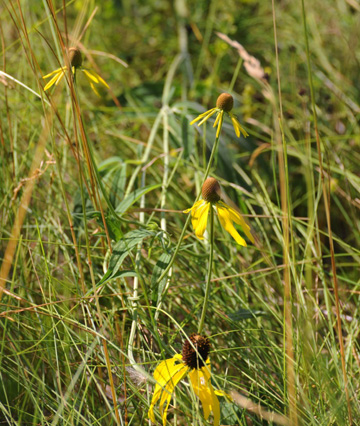Dynamics and conservation of small, threatened or endangered populations
Sweet crabapples (Malus coronaria):
The sweet crabapple (Malus coronaria) is the only native apple species Canada east of the Rockies. It's Canadian range is restricted to the Carolinian forest zone of Southern Ontario. While this native species is uncommon in Ontario, many of its close relatives have been introduced to Northa America and become common and widespread, growing in orchards, back yards, ornamental plantings, and naturalized in the wild when they escape cultivation ("feral trees"). These include, most commonly, the domestic apple (Malus domestica), and a variety of ornamental crabapple species and hybrids.
We study the impact of these introduced species on the native crabapple populations, with an emphasis on hybridization between the native crabapple (Malus coronaria) and “feral” domestic apples (apples growing wild). Our research has shown that a significant proportion of seeds produced by native crabs are hybrids when domestic apples grow in the same population (Kron and Husband, 2009). We are currently conducting a multi-year study to evaluate the relative fitness of hybrid and non-hybrid trees under natural conditions at the the rare Charitable Resource Reserve in Cambridge, Ontario. We are assessing genetic variation in wild crabs and feral domestic apples and looking for evidence of the movement of domestic apple gens into Native crabapple populations, using genetic markers (microsatellites).
Researchers: Paul Kron (Research Assoc.), Dane Cronin (M. Sc. candidate), Aron Fazekas (collaborator)
American chestnut (Castanea dentata):
American chestnut was once a dominant and economically important tree species of deciduous forests in eastern North America. In one of this continent's, greatest ecological disasters, the species was decimated by chestnut blight, caused by the introduced fungal pathogen, Cryophonectria parasitica. In Canada, approximately 1000-2000 of the original 1.5-2.0 millions trees remain, mostly as small suckers resprouting from the rootstock of infected trees. Most individuals are isolated and non-reproductive. The species is currently designated as Endangered in Canada.
Our lab has been involved in the development of the provincial and national recovery strategy for this species. In addition, in collaboration with Dr. Greg Boland (University of Guelph), we assessed the status of the Canadian population through a large-scale baseline survey of southern Ontario trees in 2001-02, and now are conducting a population viability analysis through a repeat survey in 2014-15. In partnership with the Canadian Chestnut Council, we are currently investigating population genetic diversity and rates of hybridization in native and cultivated populations using genetic markers (microsatellites).
Researchers: Stephen Van Drunen (UG), Mason Stothart (UG), Alyson Van Natto (UG), Paul Kron (Research Assoc.), Aron Fazekas (Collaborator)
Red Mulberry (Morus rubra):
Red Mulberry is an understory tree of eastern North America. In Canada, the tree is restricted to the Carolinian Life Zone of southern Ontario, where it occurs in 21 known location. The species has is designated as Endangered due to its declining numbers. A major cause of endangerment is believed to be hybridization with the introduced white mulberry.
Our lab has contributed to the conservation of this species through the work of former Ph.D. student, Kevin Burgess. During his tenure, he contributed to surveys for undocumented trees, genetic confirmation of hybridization with white mulberry, habitat mapping and ELC classification, and experimental analysis of the demographic impact of hybridization on red mulberry. Dr. Burgess has continued this research in his position at Columbus State University, Georgia.
Researchers: Kevin Burgess (Ph.D.)
Biology of tallgrass prairie remnants:
In Ontario, tallgrass prairie habitat, dominated by broad-leaved herbaceous plants and grass species, has been reduced to less than 3% of its original area. Not surprisingly, many of its key species are rare or threatened.
Our lab has studied the biology of two species associated with prairie fragments: Big Bluestem (Andropogon gerardii) and Wild bergamot (Monarda fistulosa). Using wild bergamot as a case study, Ryan Hamelin, examined restoration practices in prairies by comparing the fitness of populations in restored and non-stored locations. He tested the hypothesis that introduction of foreign source material actually reduces adaptation, at least temporarily, in restored habitats. In contrast, Zackary Harris examined factors limiting seed production in Big Bluestem grass. He specifically tested the role of pollen quality vs pollen quantity in explaining the low rates of seed production in small remnant populations of this species.
Researchers: Ryan Hamelin (M. Sc.), Zack Harris (M.Sc.)
Lakeside Daisy (Hymenoxys herbacea):
Lakeside Daisy is a small perennial plant endemic to prairie, cliff or alvar habitats in the Great Lakes region. It consists of two known populations in the U.S. and 38 populations in Canada. The species is designated as threatened in Canada due primarily to restricted habitat availability and habitat disturbance from human activity.
Our lab has contributed to the conservation of this species through the work of former M.Sc. student, Lesley Campbell. During her tenure, she completed the research and submitted the COSEWIC status report, which led to its designation as Threatened in Canada. She completed research on the genetic (self-incompatibility, genetic mate limitation) and ecological (pollinator limitation) factors limiting seed production in the remaining populations.
Researchers: Lesley Campbell (M.Sc.)
